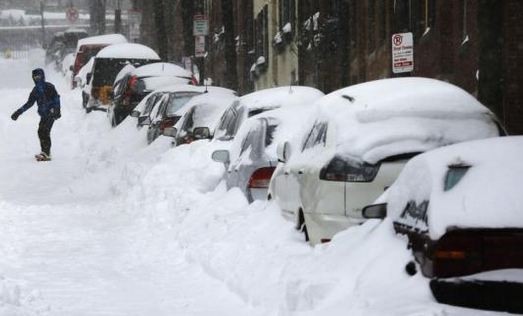The record blizzards relentlessly battering the northeastern parts of the United States over the past few weeks are being fueled by climate change, said climate scientists.
The Northeast has seen more of an increase in intense rain- and snowstorms over the past five decades than other parts of the U.S., according to U.S. National Climate Assessment, the most comprehensive report on the nation's climate, issued in 2014, according to USA Today.
Five of New York's biggest snow storms occurred since 2000. Last year was the hottest year in 130 years of temperatures records in the USA.
The "Snowmageddon" of February 2010 saw unusually high surface temperatures in the Atlantic. These temperatures reached 3 degrees Fahrenheit above normal, leading to exceptional amounts of moisture and causing extraordinary amounts of snow in the Washington DC area.
As of Feb. 8, two of Boston's 10 biggest snowstorms ever recorded have occurred over the past two weeks. More snow is expected and more snowfall records are expected to be set.
The ongoing series of winter storms that have set new snowfall records seem to confirm this conclusion. Climate scientists note the heavier storms of recent carry the imprints of climate change, according to The Guardian.
While they haven't yet been able to find a definitive link between climate change and these fierce winter storms, they say these raging blizzards carry the fingerprints of global warming and that trend lines are emerging connecting both phenomenon.
"The snow season is getting shorter," said Kevin Trenberth, a climate scientist at the National Center for Atmospheric Research. "But the interesting thing is you can end up with heavier snows in part because of climate change."
Climate change produces more extreme precipitation (the amount of water vapor in the atmosphere) in North America. When it's cold enough, this precipitation produces snow.
There's some 10% more water vapor in the atmosphere, Trenberth said. About half of that extra moisture is due to climate change, he added.
Every a 1 degree Fahrenheit difference in temperature produces about four percent more moisture.
"You can easily get as much as 20% more snow out of a storm than you would otherwise, as long as it is cold enough so that all of that moisture gets converted into snow. And that is usually the case in the wintertime," Trenberth said.



























